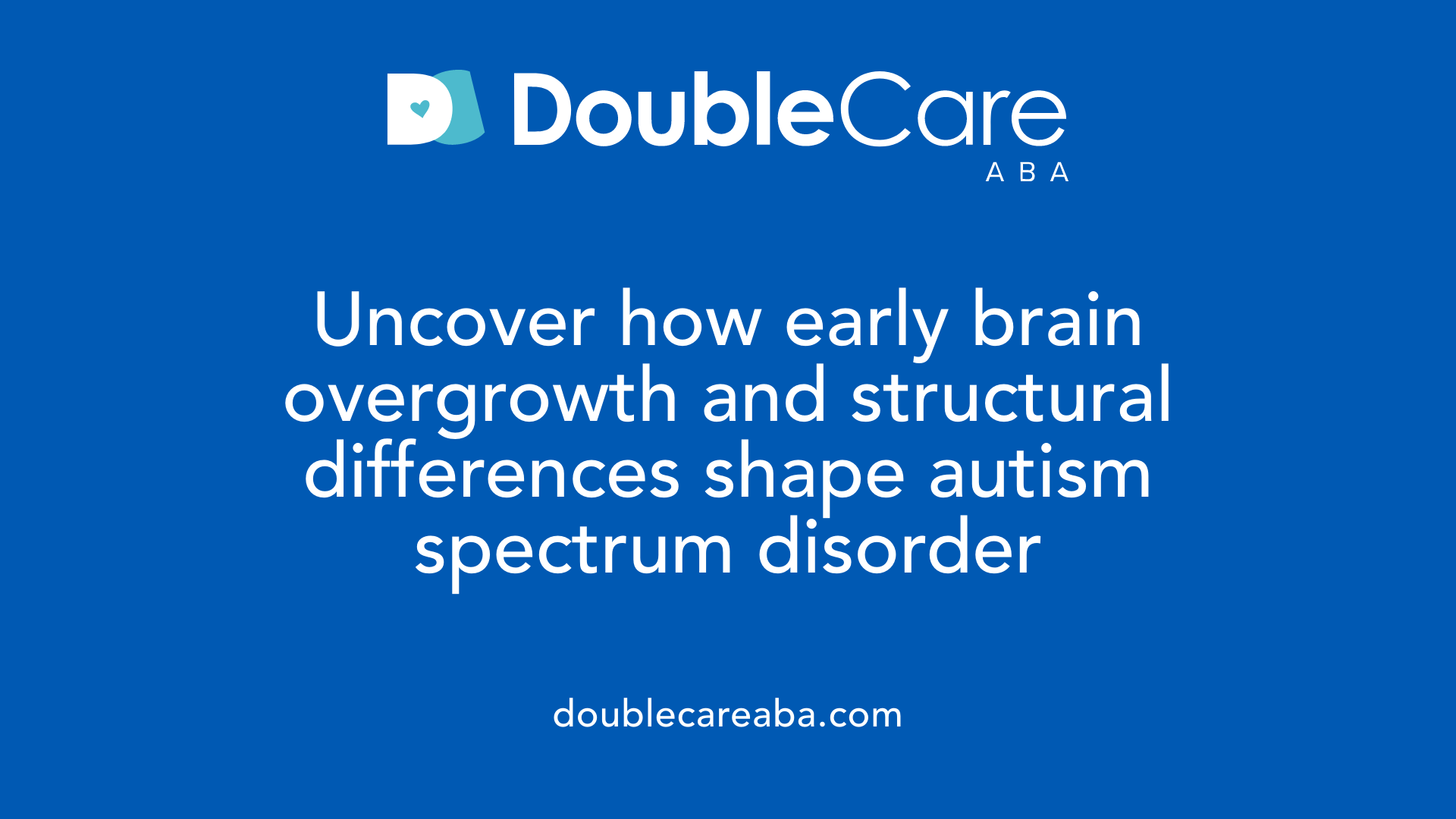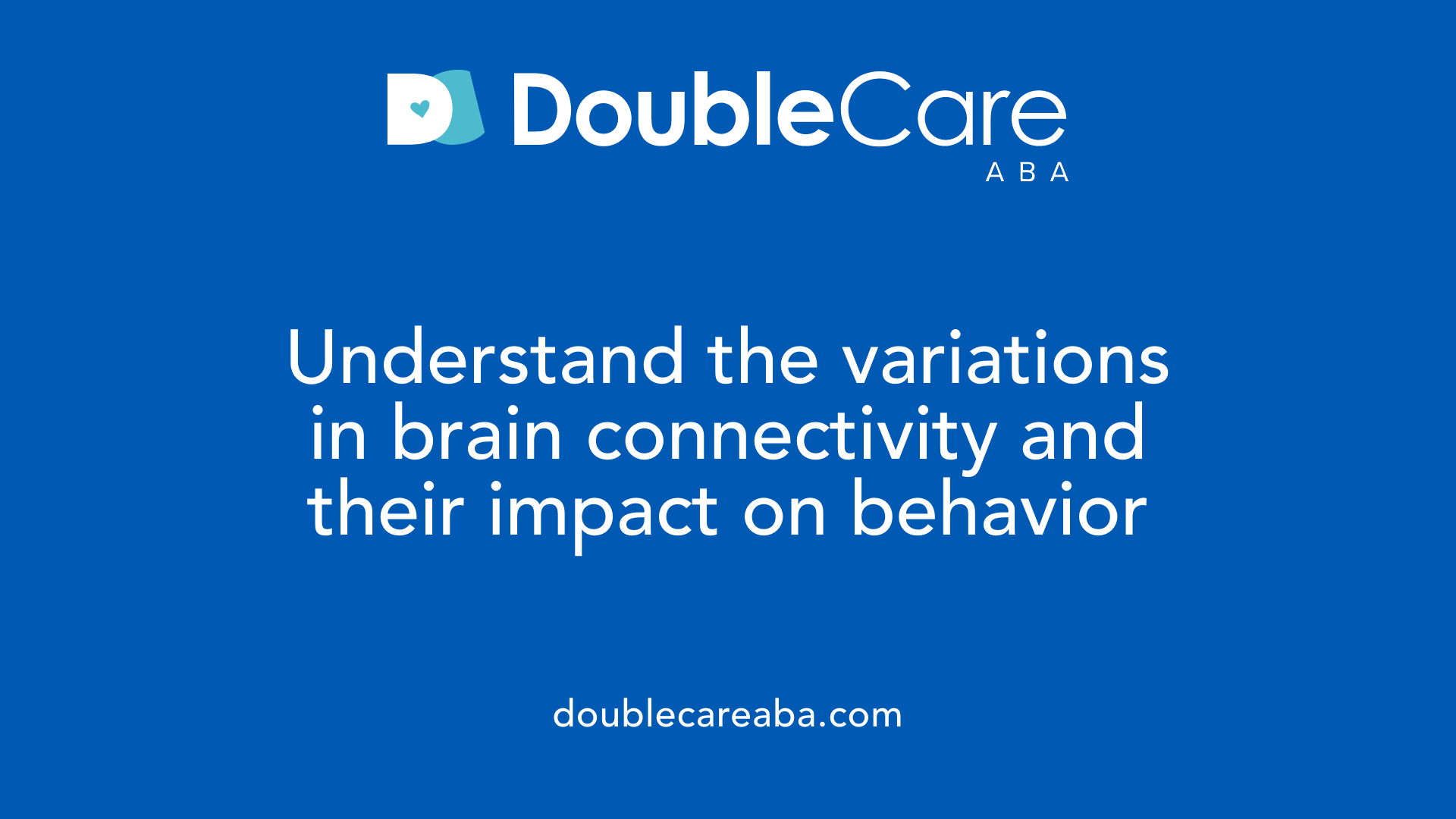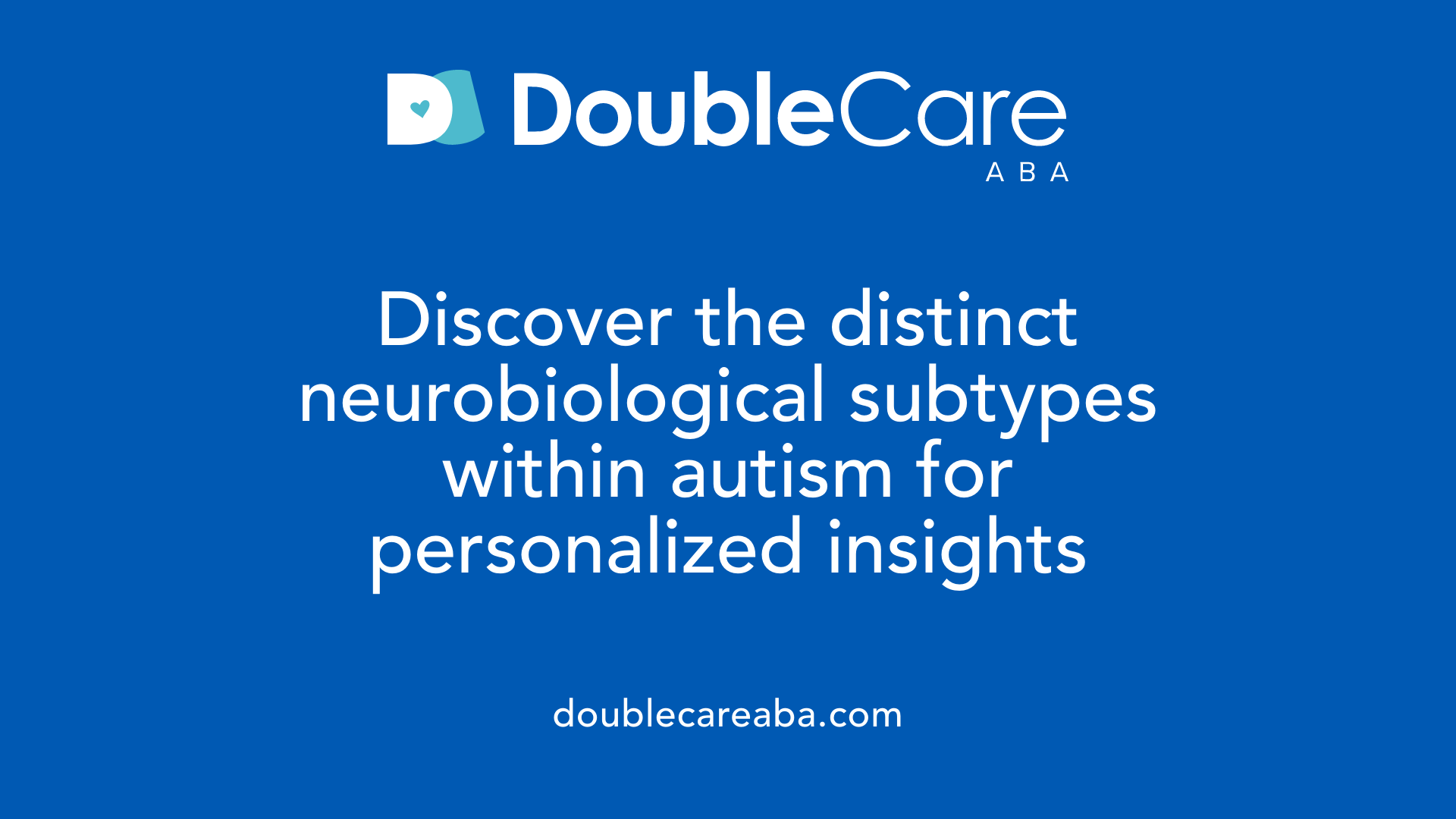Understanding the Fundamental Brain Differences in Autism
The human brain’s architecture and function differ significantly in individuals with Autism Spectrum Disorder (ASD) compared to neurotypical individuals. These differences span from neuroanatomical features and connectivity patterns to molecular and synaptic variations. Advancements in neuroimaging and neurobiological research have illuminated the underpinnings of these differences, revealing insights that could influence diagnosis, treatment, and our understanding of neural development across the lifespan.
Differences in Brain Structure and Morphology in Autism

What does scientific research reveal about differences in brain structure and morphology in autism versus typical development?
Research indicates that the brains of individuals with autism differ significantly from those of neurotypical individuals. Structural variations are evident early in development and evolve over time. One notable finding is the accelerated growth or overgrowth of certain brain regions, such as the frontal cortex and temporal lobes, particularly during early childhood. This rapid growth often levels off or even reverses in later years, with some regions showing signs of reduced volume.
In addition to overall size differences, morphological features such as cortical thickness and gyrification are altered in ASD. For example, individuals with autism tend to have increased folding patterns (gyri and sulci), especially in the left parietal and temporal lobes, as well as the right frontal and temporal regions. These structural differences are linked to modifications in how neuronal networks connect and communicate.
Recent advancements in imaging techniques, including PET scans using specialized radiotracers, have provided more detailed insights. These studies have uncovered a 17% reduction in synaptic density among autistic adults compared to neurotypical controls. This decrease in synapses is strongly correlated with core autistic features, including social-communication challenges, reduced eye contact, and sensory sensitivities.
Moreover, microstructural changes in white matter, evidenced through diffusion MRI, reveal differences in the integrity and organization of brain tissue. These alterations affect how different brain regions communicate, favoring short-range over long-range connections, which impacts overall cognitive and behavioral function.
Overall, these structural and microstructural differences highlight that autism involves widespread neural abnormalities. These variations influence brain connectivity and network functioning, ultimately affecting social behavior, language, and sensory integration.
Neuroimaging Insights into Autism’s Brain Architecture
 Recent neuroimaging studies have provided valuable insights into how the brains of individuals with autism differ from those without the condition. These differences span patterns of brain connectivity, regional brain size, and early developmental indicators.
Recent neuroimaging studies have provided valuable insights into how the brains of individuals with autism differ from those without the condition. These differences span patterns of brain connectivity, regional brain size, and early developmental indicators.
Autistic brains often show unique connectivity patterns, characterized by an over-connectivity between sensory regions and under-connectivity in areas responsible for social skills and language processing. This imbalance may contribute to sensory sensitivities and communication difficulties. For example, heightened activity in sensory regions can make external stimuli overwhelming, while reduced connectivity in social networks can hinder social understanding and interaction.
In addition to the connectivity differences, structural variations are evident in early childhood. Many autistic children exhibit increased brain volume, especially in the frontal cortex and regions associated with emotion and social behavior, during crucial developmental stages. This early overgrowth tends to normalize or decrease in size as individuals age, indicating atypical growth trajectories.
Importantly, neuroimaging research has identified signs of these differences even before behavioral symptoms become apparent. Studies involving infants at high risk for ASD, as young as 6 weeks old, reveal abnormal activity levels in sensory and social processing areas, along with atypical wiring of neural circuits. Such early indicators suggest that the neurodevelopmental divergence occurs very early, potentially guiding early diagnosis and intervention.
Utilizing advanced imaging techniques such as MRI, PET scans, and fMRI helps researchers observe these functional and structural differences, uncovering metabolic and neurotransmitter anomalies as well as signs of neuroinflammation. For instance, decreases in inhibitory GABA signaling over time and altered protein expression related to immune response are observed, hinting at complex molecular mechanisms underlying the structural brain differences.
These findings point toward an atypical developmental course of the brain in autism, with early overgrowth followed by irregular maturation of critical networks involved in social interaction, language, and sensory processing. Integrating neuroimaging data with genetic and behavioral profiles is paving the way for earlier diagnosis, better understanding of autism's heterogeneity, and the development of tailored therapies.
Neuroanatomical Features Characteristic of the Autistic Brain
Autistic brains display a variety of structural distinctions that mirror atypical developmental processes. One prominent feature is the early overgrowth of certain brain regions, notably the frontal cortex, amygdala, and cerebellum. During childhood, these areas tend to enlarge more rapidly compared to neurotypical development, but later in life, some of these regions may normalize in size or even shrink.
Structural differences extend to the organization of the cortex itself. For example, variations in cortical thickness and alterations in microstructural elements like minicolumns—vertical neuronal arrangements—have been observed. These modifications may influence how neurons connect and communicate within the brain.
The amygdala, which plays a crucial role in emotion regulation and social behavior, often shows early overgrowth in toddlers, correlating with behavioral challenges. Over time, its size may decrease or stabilize, reflecting a dynamic developmental pattern.
Similarly, the cerebellum, vital for coordination and motor control, exhibits signs such as hypoplasia (underdevelopment) of the central vermis lobules and a reduction in the number and size of Purkinje cells. These changes might contribute to the motor and cognitive difficulties commonly associated with autism.
Beyond specific structures, notable abnormalities exist in the corpus callosum, the bundle of fibers linking the brain’s hemispheres. Its organization appears atypical, which may impair interhemispheric communication. Moreover, connectivity patterns—both locally in nearby regions and across distant parts of the brain—are altered, often characterized by increased short-range connectivity and decreased long-range connections.
Collectively, these neuroanatomical variations point to a complex neurodevelopmental profile in autism, with significant individual differences influenced by genetic and environmental factors.
Brain Development Patterns in Autism Compared to Typical Development
How does brain development in autistic individuals compare to typical brain development?
Autistic individuals often experience a different trajectory of brain growth compared to neurotypical development. During the first two years of life, there is a tendency for early brain overgrowth, especially in regions associated with complex cognitive functions like the cerebral cortex, cerebellum, and limbic system.
This rapid expansion can result in increased brain volume and altered structural features, such as increased symmetry between hemispheres and less typical lateralization related to language functions. The increased folding in specific brain areas, including the parietal, temporal, and frontal regions, reflects changes in neuronal organization and connectivity.
Following this early overgrowth phase, many children and adults with autism encounter slowed or even arrested growth. This disruption impacts the formation of neural circuits, affecting connectivity patterns. Instead of balanced long-range and short-range connections, autistic brains tend to show over-connected local networks but reduced connectivity between distant brain regions.
These structural alterations are rooted in genetic and molecular differences. Variations in gene expression related to inflammation, immune responses, neurotransmitter activity, and neural signaling pathways influence the development of brain architecture. Such molecular influences contribute to the atypical developmental trajectory seen in autism.
Overall, early brain overgrowth, followed by slowed or halted growth, leads to enduring changes in neural circuitry, which underpin some of the behavioral patterns and cognitive differences characteristic of autism spectrum disorder.
Neurobiological Differences Between Autistic and Neurotypical Brains
What are the neurobiological differences between autistic and neurotypical brains?
Autistic brains display a variety of structural, functional, and molecular differences compared to neurotypical brains. Structurally, early childhood neuroimaging shows overgrowth in the frontal cortex and increased cortical folding in regions like the parietal and temporal lobes. These structural changes are linked to altered neuronal network connectivity, with patterns of short-range overconnectivity and long-range underconnectivity, which can impair information integration.
Functionally, autism involves atypical brain activity patterns. For example, increased sensory region activation in response to stimuli such as noise or touch is common, and a failure to habituate or decrease neural response over time is observed. Recent advancements using PET scans with the novel radiotracer 11C‑UCB‑J have allowed scientists to measure synaptic density directly in living autistic adults. Findings show a 17% reduction in synaptic density across the brain, which correlates with social communication difficulties and sensory issues.
Molecular and synaptic studies reveal widespread differences in gene expression pathways related to synaptogenesis, immune responses, and inflammation. For instance, autistic brains tend to have altered expression of genes involved in immune function and neurotransmitter systems like GABA, which is crucial for brain inhibition. Moreover, gene expression changes also suggest accelerated brain aging and disruptions in neural communication pathways.
In summary, the neurobiological landscape of autism encompasses structural brain alterations, atypical functional connectivity, and significant molecular variations. These differences help explain the characteristic behaviors and cognitive profiles seen in autism, while also pointing toward potential neurobiological targets for future diagnosis and treatment development.
Brain Connectivity and Network Organization in Autism

How does brain connectivity differ in individuals with autism compared to neurotypical individuals?
People with autism often show unique patterns of brain connectivity that differ from typical development. Research reveals both increased (hyperconnectivity) and decreased (hypoconnectivity) connections across different brain areas. Early in childhood, some regions, especially those involved in sensory input and motor functions, tend to have stronger connections, reflecting hyperconnectivity. As individuals age, these patterns can shift, with fewer connections forming in areas linked to higher cognitive functions, such as the prefrontal cortex, leading to hypoconnectivity.
This mix of connectivity patterns underpins many of the behavioral traits associated with autism, including challenges in social communication and sensory processing. Studies also find considerable variability or heterogeneity in these neural networks among autistic individuals, which tends to increase with age.
Impacts on social and sensory processing
Atypical brain wiring affects how individuals with autism perceive, interpret, and respond to sensory stimuli and social cues. Increased connectivity in sensory regions can result in heightened sensory sensitivities, while decreased connectivity in social-related regions can impair social interactions and communication.
Age-related connectivity changes
Connectivity patterns in autism are not static—they evolve across the lifespan. In early years, brain overgrowth and hyperconnectivity are common, which may later normalize or decline, leading to the observed hypoconnectivity in adolescents and adults. Longitudinal studies highlight that these changes are linked with the severity of symptoms and can influence developmental trajectories.
Individual variability and heterogeneity
Autism is a highly heterogeneous condition. Different individuals exhibit diverse connectivity profiles, which suggests multiple underlying neurobiological pathways. This variability complicates diagnosis and treatment but also offers opportunities for personalized intervention strategies.
| Aspect | Connectivity Pattern | Developmental Stage | Impact |
|---|---|---|---|
| Early childhood | Increased (hyperconnectivity) | Childhood | Sensory sensitivities, initial overgrowth |
| Later childhood/adulthood | Reduced (hypoconnectivity) | Adolescence/adulthood | Challenges in social, executive functions |
| Variability | Significant heterogeneity | Across all ages | Individual differences in symptoms and response to interventions |
Understanding these complex patterns is essential for developing targeted therapies and improving outcomes for individuals across the autism spectrum.
Subtypes of Autism Based on Brain Differences and Genetics

What does research say about the existence of different subtypes within autism based on brain differences?
Recent research demonstrates that autism spectrum disorder (ASD) is not a single, uniform condition but comprises multiple neurobiological subtypes. Using advanced neuroimaging techniques like MRI and machine learning analysis, scientists have identified at least four distinct groups within the autism population.
These subgroups are characterized by unique patterns of brain connectivity, structure, and gene activity. For example, some individuals show heightened connectivity in visual processing and salience detection regions, while others exhibit weaker connections that impair social interaction and verbal communication.
Studies also reveal differences in brain regions such as the default mode network, cerebellum, and frontal lobes across these subtypes, which correlate with behavioral traits like repetitive behaviors, social impairment, and verbal skills. Furthermore, molecular markers, including oxytocin and various immune and synaptic proteins, differ among these groups, suggesting a complex biological landscape.
Genetic analyses support these distinctions, showing that certain gene expression profiles and protein interactions are linked to specific brain network patterns. Genes involved in inflammation, neural transmission, and synaptic formation are differentially expressed, contributing to the neurobiological diversity observed in ASD.
Understanding these subtypes highlights the importance of personalized approaches in diagnosis and treatment, promising more targeted and effective interventions in the future.
| Subtype | Key Brain Features | Behavioral Traits | Underlying Molecular Markers |
|---|---|---|---|
| Visual Salience Hyperactivity | Increased activity in visual and salience networks | Heightened sensory response, visual focus | Oxytocin abundance, immune-related proteins |
| Social Connection Weakness | Weaker frontoparietal and default mode connectivity | Severe social difficulties | Variations in gene expression related to social cognition |
| Verbal Impairment | Altered language network connectivity | Reduced verbal ability, communication issues | Differential expression of language-related genes |
| Repetitive Behavior Focus | Increased connectivity in motor and repetitive circuits | High repetitive behaviors | Neurotransmitter and synaptic function markers |
This evidence underscores that ASD is a mosaic of multiple subtypes, each with unique neurobiological signatures that can inform more tailored treatments.
The Future of Autism Research and Brain Studies
Ongoing research continues to unravel the neurobiological intricacies of autism, emphasizing its heterogeneity and the variation in brain structure, connectivity, and molecular features. Advances in neuroimaging, genetics, and biomarker identification are paving the way for more tailored diagnoses and personalized interventions. Understanding these differences not only enhances early detection but also fosters the development of targeted therapies aimed at specific brain subtypes, offering hope for improving quality of life and social functioning in individuals with ASD. As our knowledge deepens, the integration of neurobiological data with behavioral and environmental factors will be crucial in shaping the future of autism diagnosis, treatment, and support strategies.
References
- A Key Brain Difference Linked to Autism Is Found for the First Time ...
- Autism Spectrum Disorder: Autistic Brains vs Non ... - HealthCentral
- Autistic Brain vs Normal Brain | UCLA Medical School
- The neuroanatomy of autism – a developmental perspective - PMC
- Four Different Autism Subtypes Identified in Brain Study | Newsroom
- Study reveals differences in brain structure for older autistic adults
- UC Davis study uncovers age-related brain differences in autistic ...














